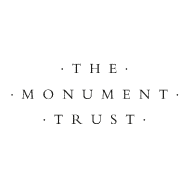Formation and Early Years
The Guild of Players was formed in 1913 with the aim of “promoting an improvement in the public attitude towards, and taste for, the drama, by means of plays of outstanding merit, by lectures and readings”
While the outbreak of the First World War in 1914 did reduce the initial membership, the Guild spent those early years raising money for the war effort by putting on performances in the Mechanics Institute and the Lyceum Cinema – which is now the home of the Loreburn Centre.
After the War, the Guild continued with their program of performances and touring with various productions. One of the most noteworthy was “The Scotland of Robert Burns”, which was written by George W. Shirley, a local librarian, which would go on to become of the Guild’s most popular productions with the production even being staged at the Lyric Theatre in Glasgow to critical acclaim. It was also during this period that the acclaimed actor John Laurie was among the Guild’s members, featuring in some of those first productions.
WWII and the move to Shakespeare Street
In the 1930s The Guild was based primarily at Greyfriars’ Hall, where they held monthly meetings and staged most of their productions. The Guild was also supported by the Scottish Community Drama Association Festival of One Act Plays, with more than 50 one-act plays being performed over the course of ten years.
After the lease of Greyfriars’ Hall came to an end in 1943, the Guild moved to 15 Shakespeare Street to the Little Theatre. Now demolished, this 96 seat theatre became the Guild’s first permanent headquarters – a move which marked the end of the Guild’s time as a touring company. This decision proved an immediate success. Money no longer had to be spent transporting actors and scenery to outlying villages and other venues. A membership scheme was introduced, and the total membership soon exceeded the numbers attending the previous travelling productions.
Though the Second World War was to cause a cessation of activities, the Guild was able to contribute to the entertainment of those in Dumfries. Despite a decreased membership, the Guild staged plays and variety shows, not just for the townspeople but also for the British and Allied soldiers who were stationed in the town and surrounding area. In total, twenty-four full productions were staged during the wartime years.
Post War and Purchasing the Theatre
Post-War, the Guild was quick to return to form, with full rehearsals for a new production underway just three months after the end of the conflict. These years were also full of Tuesday Evening productions, many of which were one act plays. The Studio was used to its full capacity and potential for these plays along with Festival productions and a series of prize-winning plays in competitions promoted by the Guild. It was also during this time that the Guild first instituted the member application policy, due to the high numbers of interest being generated.
By 1959, Dumfries was being re-developed. Older buildings were being demolished and 15 Shakespeare Street was among them. The Guild began to look for a new home and considered various alternatives – including a church, a synagogue, a mill and an old wash house on Burns Street. An offer had actually been submitted for the wash house when a member of the Guild’s Council heard, through a mutual friend, that the owners of the Theatre Royal were willing to sell. The Council members took advantage of this opportunity and the Guild purchased the Theatre in April 1959 for £1,700.
The Guild and The Theatre Royal
After the Guild purchased the Theatre Royal, it was discovered that there was some urgent repair and restoration that needed to be done. A great deal of work was done by the Guild membership, with several local tradesmen offering their services free of charge. The Theatre was formally re-opened on October 1st, 1960 by the actor and author Sir Compton McKenzie.
In 1963, the Guild was awarded a license by the Performing Rights Society, which allowed it to open the theatre doors to the public and sell tickets for their own productions. The license also allowed the Guild to lease out the theatre to other organisations, including touring companies. By the end of the decade, Scottish Ballet, Glasgow Citizens’ Theatre, Dundee Repertory Theatre and the Scottish Chamber Orchestra were just some of the visitors to put on productions at the Theatre Royal.
The 1970s saw the Theatre expand, with the Guild purchasing 49 Queen Street as well as Radcliffe and Shearer’s warehouse. These spaces were initially used for rental purposes to generate income following the Theatre purchase but would later go on to form part of the plans to renovate the Theatre to include new spaces, updated features and important restoration work in the years to come.
Redevelopment and the 21st Century
By the start of the 1990s, the Guild had completed the first stages of renovation and, in 1992, working with the Nithsdale District Council to create a “vibrant Theatre/Arts centre as a focus for the area.”Part of this plan included the purchase of further property in Queen Street to expand the Theatre further. However, the Guild soon faced a divisive issue when the suggestion was made to transfer ownership of the Theatre from the Guild to a Trust organisation in order to secure more funding.
The debate was centred on the fact that while the Guild would be able to focus more on continuing the produce high-quality productions, there was strong opposition to “losing (our) beloved theatre to some nameless trust” and to what that would mean moving forward. This debate was settled with the eventual formation of the Dumfries Theatre Royal Trust in 2000.
The Trust, which included four prominent Guild members, was then tasked with securing the much-needed funds. Two unsuccessful bids followed and the Guild was dealt another blow when a major contributor withdrew their support in 2005. Soon after, the Guild withdrew from the Trust and made the decision to seek funding as an independent organisation. Ultimately, the Guild was able to secure funding from the Holywood Trust in 2011, followed by the Heritage Lottery Fund, Historic Scotland, Creative Scotland, the Robertson Trust and Dumfries and Galloway Council by 2013, with the restoration work beginning in 2014.
The redevelopment was completed in late 2015, combining the features and atmosphere of the Theatre of JM Barrie and Robert Burns with a modern glass fronted atrium and updated facilities. The redevelopment is a fitting tribute to the tenacity and determination of the Guild, and to the generosity and commitment of its funders.

















